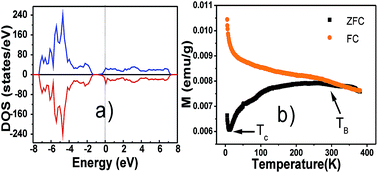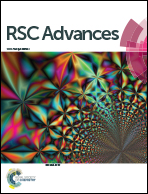Magnetic phase transition of Ag2S:Eu diluted magnetic semiconductor nanoparticles†
Abstract
In this study, we synthesize europium doped Ag2S diluted magnetic semiconductor (DMS) nanoparticles using a gas–liquid phase chemical deposition process. It has been found that the Ag2S:Eu nanoparticles have room-temperature ferromagnetism (RTF) and display two remarkable magnetic phase transitions with decreasing temperature, i.e., the classic thermally driven transition from superparamagnetism to blocked superparamagnetism and the quantum phase transition from magnetic long-range order to quantum superparamagnetism state. When the blocking temperature (TB, 300 K) is reached, the first magnetic phase transition from superparamagnetism to blocked superparamagnetism is observed; after further temperature decrease to the critical phase transition temperature (TC, 11 K) the second magnetic phase transition which is from magnetic long-range order to quantum superparamagnetism is observed because of the quantum tunnelling effect. The spin-resolved density of states is calculated by the software VASP (Vienna Ab-initio Simulation Package) to investigate the origin of magnetism of the Ag2S:Eu nanoparticles. It is found that the magnetism originates from the doped Eu atoms and is caused by an f–f exchange interaction of Eu ions.


 Please wait while we load your content...
Please wait while we load your content...